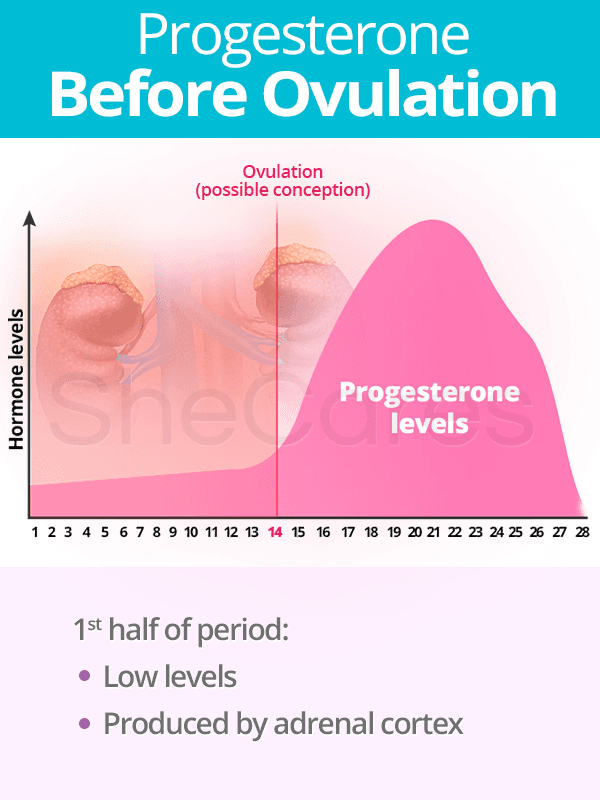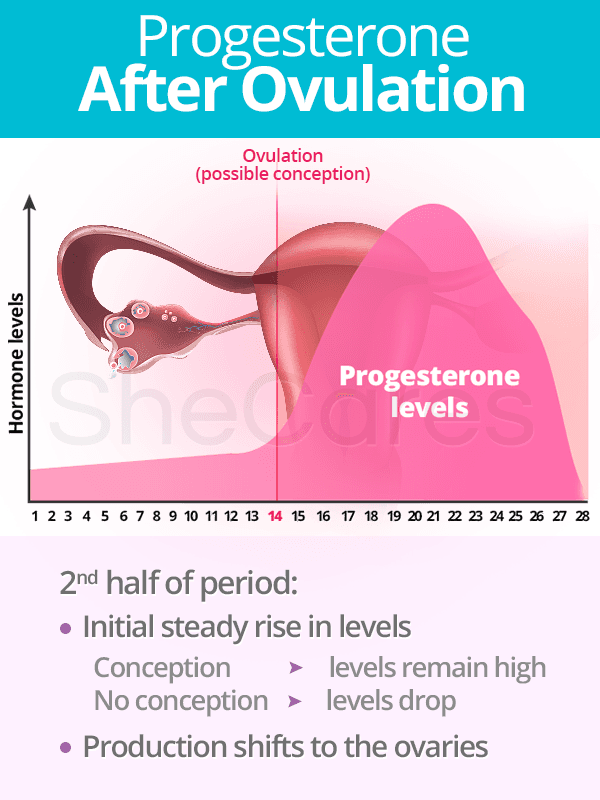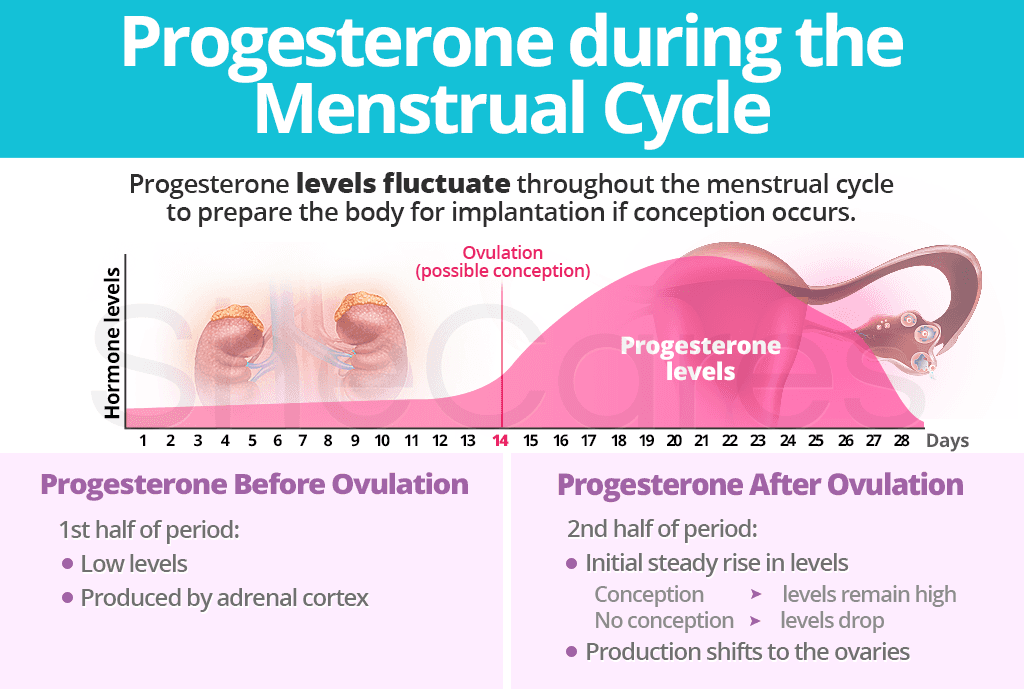The menstrual cycle is a biofeedback system, meaning that each gland and structure is affected by the activity of others. One of the principal sex hormones intricately involved with the healthy functioning of this monthly process is progesterone.
Continue reading to learn more about the role of progesterone in the menstrual cycle as well as how progesterone levels fluctuate throughout the cycle stages.
Progesterone Before Ovulation
First Half of the Menstrual Cycle

The first half of the menstrual cycle is known as the follicular phase, or the proliferative phase. It begins with the first day of menses and lasts until ovulation, usually ranging from 10 to 16 days.
During most of the follicular phase, progesterone levels are low. The small amount of progesterone produced is derived from the adrenal cortex. It is converted from an endogenous steroid known as pregnenolone. At this point, the contribution of the ovaries to the blood plasma levels of progesterone is minor.
It is reported that the progesterone produced during the follicular phase is important for subsequent ovulation, but it is after ovulation that progesterone dominates.
Progesterone After Ovulation
Second Half of the Menstrual Cycle

The second half of the menstrual cycle is called the luteal phase, or the secretory phase. The duration of the luteal phase is relatively constant in all women, lasting around 14 days.
The luteal phase is characterized by a gradual rise in progesterone. This hormone level increase begins shortly after ovulation and lasts until the beginning of the following menstrual cycle.
Accordingly, the source of progesterone shifts towards the ovaries as the hormone is secreted by the corpus luteum, a temporary structure formed from the ruptured follicle.
Progesterone produced during this time serves to maintain the thickened lining of the uterus in preparation for the fertilized egg to implant itself. It also prohibits uterine muscle contractions that would cause the body to reject an egg.
If pregnancy occurs, progesterone levels will remain high as the corpus luteum continues production until the placenta takes over.
If pregnancy does not occur, the structure will deteriorate, causing progesterone levels to drop until the initiation of the next menstrual cycle.
In general, complications that arise with respect to progesterone levels during the menstrual cycle could lead to a myriad of long-term health problems.
For instance, women with polycystic ovarian syndrome (PCOS) or going through the menopausal transition will often experience cycles without ovulation, or anovulatory cycles. In the absence of ovulation, there is little progesterone to counteract estrogen's effects. Symptoms of estrogen dominance may ensue, such as headaches, insomnia, bloating, fibrocystic breasts, acne, and more.
Furthermore, any defect in follicular development or corpus luteum function could cause luteal phase defect. Luteal phase defect is marked by the failure to develop a fully mature secretory endometrium, preventing embryo implantation. This could lead to infertility or a miscarriage.
Continue reading to learn more about the instrumental role of progesterone during pregnancy, from how the hormone supports fetal development to full-term to its effects in a new mother's body postpartum.
Sources
- Becker, K.L. (2001). Principles and Practice of Endocrinology and Metabolism, Third Edition. Pennsylvania: Lippincott Williams & Wilkins. Available from Google Books.
- De Geyter, C. et al. (2002). Progesterone serum levels during the follicular phase of the menstrual cycle originate from the crosstalk between the ovaries and the adrenal cortex. Human Reproduction, 17(4), 933-939. doi: 10.1093/humrep/17.4.933
- Hillard, P.J.A. (Ed.). (2008). The 5-Minute Obstetrics and Gynecology Consult. Pennsylvania: Lippincott Williams & Wilkins. Available from Google Books.
- Hormone Health Network. (n.d.). What is Progesterone? Retrieved October 9, 2017, from http://www.hormone.org/hormones-and-health/hormones/progesterone
- Johnson, L. R. (Ed.). (2003). Essential Medical Physiology. USA: Elsevier. Available from Google Books.
- Reed, B.G. & Carr, B.R. (2015). The Normal Menstrual Cycle and the Control of Ovulation. Retrieved October 9, 2017, from https://www.ncbi.nlm.nih.gov/books/NBK279054/
- State Government of Victoria, Australia: Department of Health & Human Services. (n.d.). Menstrual cycle. Retrieved October 9, 2017, from https://www.betterhealth.vic.gov.au/health/conditionsandtreatments/menstrual-cycle
- University of Maryland Medical Center. (2012). Infertility in women. Retrieved October 9, 2017, from http://www.umm.edu/health/medical/reports/articles/infertility-in-women
